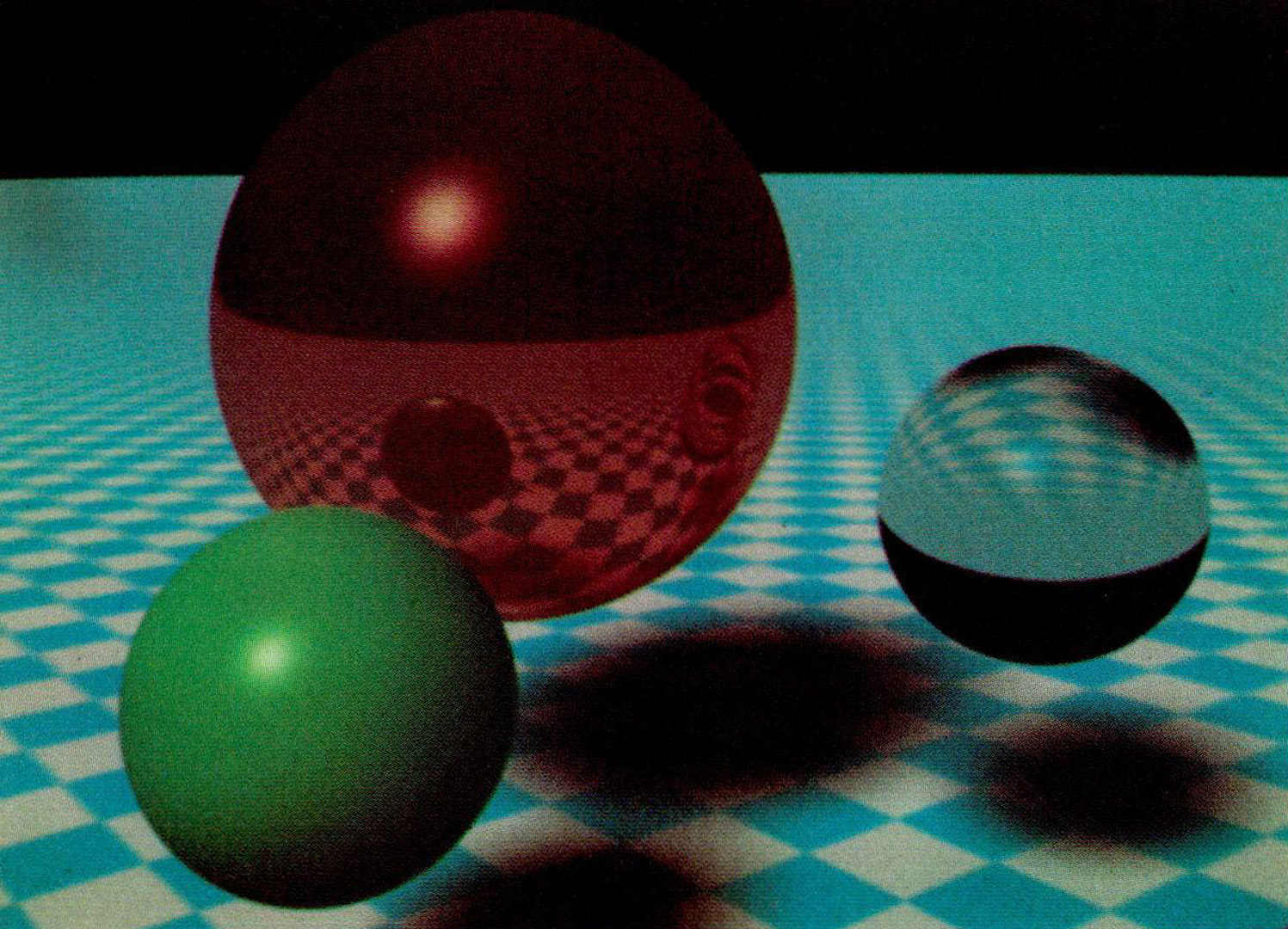“Ray tracing with cones” by Amanatides
Conference:
Type(s):
Title:
- Ray tracing with cones
Presenter(s)/Author(s):
Abstract:
A new approach to ray tracing is introduced. The definition of a “ray” is extended into a cone by including information on the spread angle and the virtual origin. The advantages of this approach, which tries to model light propagation with more fidelity, include a better method of anti-aliasing, a way of calculating fuzzy shadows and dull reflections, a method of calculating the correct level of detail in a procedural model and texture map, and finally, a procedure for faster intersection calculation.
References:
1. Amanatides, J., and Fournier, A., “Ray Casting using Divide and Conquer in Screen Space”, Proc. Intl. Conf. of Engineering and Computer Graphics, Beijing, China, Aug. 27 – Sept. 1 1984.
2. Blinn, J.F., and Newell, M.E., “Texture and Reflection in Computer Generated Images”, Comm. ACM, Vol. 19(10), October 1976, pp. 542-547.
3. Clark, J.H., “Hierarchical Geometric Models for Visible Surface Algorithms”, Comm. ACM, VoL 19(10), October 1976, pp.547-554.
4. Crow, F.C., “Shadow Algorithms for Computer Graphics”, Computer Graphics, Vol. 11(3), July 1977, pp. 242-248.
5. Crow. F.C., “The Aliasing Problem in Computer-Generated Shaded Images”, Comm. ACM, Vol. 20(11), November 1977, pp. 799-805.
6. Crow, F.C., “A Comparison of Antialiasing Techniques”, IEEE Computer Graphics and Applications, Vol. 1(1), January 1981, pp. 40-48.
7. Flume, E., Fournier, A., and Rudolph, L., “A Parallel Scan Conversion Algorithm with Anti-Aliasing for a General Purpose Ultracomputer”, Computer Graphics, Vol. 17(3), July 1983, pp. 141-150.
8. Fournier, A., Fussell, D., and Carpenter, L., “Computer Rendering of Stochastic Models”, Comm. ACM, Vol. 25(6), June 1982, pp. 371-384.
9. Goldstein, R.A., and Nagel, R., “3-D Visual Simulation”, Simulation, January 1971, pp. 25-31.
10. Hall, R.A., and Greenberg, D.P., “A Testbed for Realistic Image Synthesis”, IEEE Computer Graphics and Applications, Vol. 3(8), November 1983, pp. 10-20.
11. Hanrahan, P., “Ray Tracing Algebraic Surfaces”, Computer Graphics, Vol. 17(3), July 1983, pp.83-90.
12. Hect, E., and Zajac, A., OPTICS, Addison Wesley Publishing Company, Reading Massachusetts, 1974.
13. Kajiya, J.T., “New Techniques For Ray Tracing Procedurally Defined Objects”, Computer Graphics, Vol. 17(3), July 1983, pp. 91-102.
14. Rubin, S.M., and Whitted, T., “A 3-Dimensional Representation for Fast Rendering of Complex Scenes”, Computer Graphics, Vol. 14(3), July 1980, pp. 110-116.
15. Roth, S.D., “Ray Casting for Modeling Solids”, Computer Graphics and Image Processing, Vol. 18, 1982, pp. 109-144.
16. Warnock, J., A Hidden-Surface Algorithm for Computer Generated Half-Tone Pictures, Univ. Utah Computer Sci. Dept., TR 4-15, 1969, NTIS AD-733 671.
17. Whitted, T., “An Improved Illumination Model for Shaded Display”, Comm. ACM, Vol. 23(6), June 1980, pp. 343-349.
18. Williams, L., “Pyramidal Parametrics”, Computer Graphics, Vol. 17(3), July 1983, pp. 1-11.




